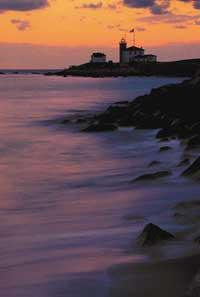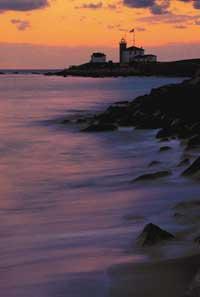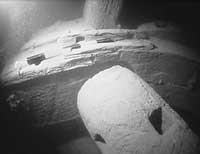Eddystone: creation of a lighthouse
2001/11/04 Roa Zubia, Guillermo - Elhuyar Zientzia
The first two lighthouses
Henry Winstanley was a great artist. Selling the games and invented cards made a lot of money. London of the twentieth century. However, it was not a man who lost the money at stake and with much sense invested in the purchase of five merchants. But then sailing at sea was very insecure and in August 1695 a boat sank into the Eddystone rocks of the Plymouth area. It was not a joy for him, but he accepted destiny and went on. Shortly afterwards, a second boat of his suffered an accident in the same place and sank.
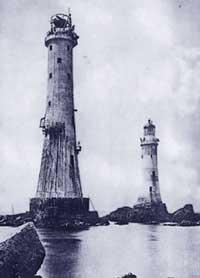
Winstanley did not stay at home waiting for the third to sink. On the contrary, he left for Plymouth to investigate the remains of these serious accidents. The Eddystone rocks constituted a very steep coast and represented a great risk for the ships. Winstanley was a brave and fast man who saw a simple solution: he designed and built a lighthouse.
It was one of the most curious lighthouses both in England and elsewhere. And it is that Winstanley was not an architect and therefore his design turned out strange. During the construction of the lighthouse, and despite having the protection of a military ship, one night Wintanley was captured and imprisoned by the French. In return, freeing prisoners of war, the British admiral managed to bring home and began to build the lighthouse.
The guiding light of the Eddystone rocks was lit for the first time on November 14, 1698. It had a very peculiar structure, full of ornaments, and was a tower built not only to work in the form of a lighthouse, but also to keep the attack in case of besieging. But when he returned to the lighthouse after the first winter, Winstanley realized that he was not strong. That same year he decided to renew it. Almost doubled the height and diameter of the base and in the coming years no boat in Eddyston sank.
Winstanley was very proud of the lighthouse, but hired guards complained very often. The owner decided to stay in the same autumn storms and, with a very optimistic attitude, settled there.
November 26, 1703 was one of the most violent storms of the time (also called The Great Storm) and the next day there were no lighthouse remains. It was completely destroyed and the guards and Winstanley himself disappeared forever. The next day a boat sank on the Eddystone rocks and the inhabitants of Plymouth felt the need to build another lighthouse.
Third lighthouse
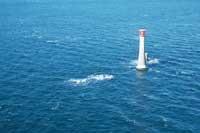
In 1709, John Rudyerd finished the third lighthouse of the Eddystone rocks. Apparently it was not like those invented by Wistanley. However, this silk seller also chose wood as a building material, turning the boats into a basic model. In his view, if the ships remained intact during storms, the similar design lighthouse could survive. Once the construction was finished, it left no trace.
For 46 years it was a very successful lighthouse. But in 1755, the 94-year-old guard Henry Hall observed that the smoke was coming out of the roof. A spark created in the heating of the kitchen burned the roof and began to burn. The Hall woke up both comrades and tried among all to quench the fire. They soon realized that it was impossible and headed towards the bottom of the lighthouse in search of shelter. The lighthouse was burned and disappeared, but the guards survived on the underlying rock.
After spending that cold night in some way, they were rescued the next day. However, two weeks later Hall died and, when examining the corpse, they discovered that the lead of the lighthouse evaporated by fire solidifies in his stomach. The cuited Hall was the first dead documented by lead.
Tower of Smeaton
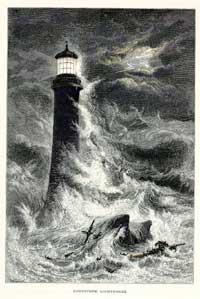
The fourth lighthouse of the Eddystone rocks was built by an instrumentalist from Yorkshire County. The main condition that established in the design of the tower was the construction of stone. A stone lighthouse was never built in a rock in the center of the sea, and many people thought it was impossible to do so. Smeaton took the most resistant rock type possible and made a design inspired by the oak trunks, which bear well the wind.
Smeaton carried out many scientific experiments, a cement that dries quickly, but does not affect the sea because it needed it. To be able to enter an appropriate and perfect place, the good coastal masons gave natural form to the stones. The construction works finished in 1789 and had a great success, with some pride he was called the father of civil engineering. It is a lighthouse of great prestige and durability, which is still standing on the plain of Plymouth Hoe. Around 1870 it was discovered that the rock under the lighthouse was eroded, so it was dragged stone to the coast and decided to build another. Today it remains there as a remembrance of this peaceful epoch.
Last lighthouse Last lighthouse
The design of Smeaton was not limited to it. The designer of the next lighthouse of the Eddyston rocks, Sir James Douglas, also took it into account. In 1882 the new lighthouse was lit for the first time. The look of this lighthouse has become an example of many more. Its total automation dates from 1982, so since then it has not been necessary to have more vigilantes.
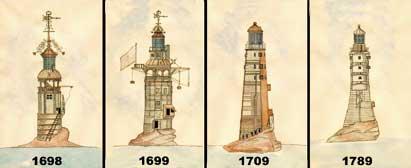
Published in 7K

Gai honi buruzko eduki gehiago
Elhuyarrek garatutako teknologia



